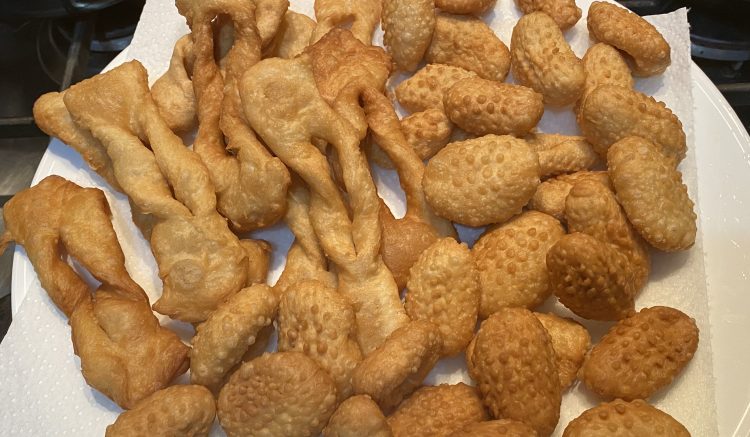I have yet to visit Tibet, though I would love to see it one day and to experience the culture and food. My impression is that authentic Tibetan restaurants are not very common even in multi-national London. In fact, a search for Tibetan restaurants in London on GoogleMaps identifies a few Tibetan restaurant and many Nepalese restaurants. There may be some similarities in foods in these neighbouring areas. My Tibetan friend Geleck recommends Kailash Momo restaurant in Woolwich for traditional food, and I hope to try it after the covid-19 lockdown ends! In the meantime, I am sharing a recipe for Tibetan Khapse. This recipe was recommended by Geleck. When he wished me a happy Losar (Tibetan New Year), he mentioned that Khapse are commonly eaten to celebrate this important Tibetan holiday.
The recipe and process for these traditional fried biscuits is presented in a YouTube vide by Palden’s Kitchen. I recommend to watch the video to make the shapes correctly. Especially because I failed on the second of the three shapes. I think my dough was a bit too soft and sticky, so next time I would use either more flour or less water. The photos show my version of the Khapse process, and after this we were able to enjoy a small taste of Tibet.
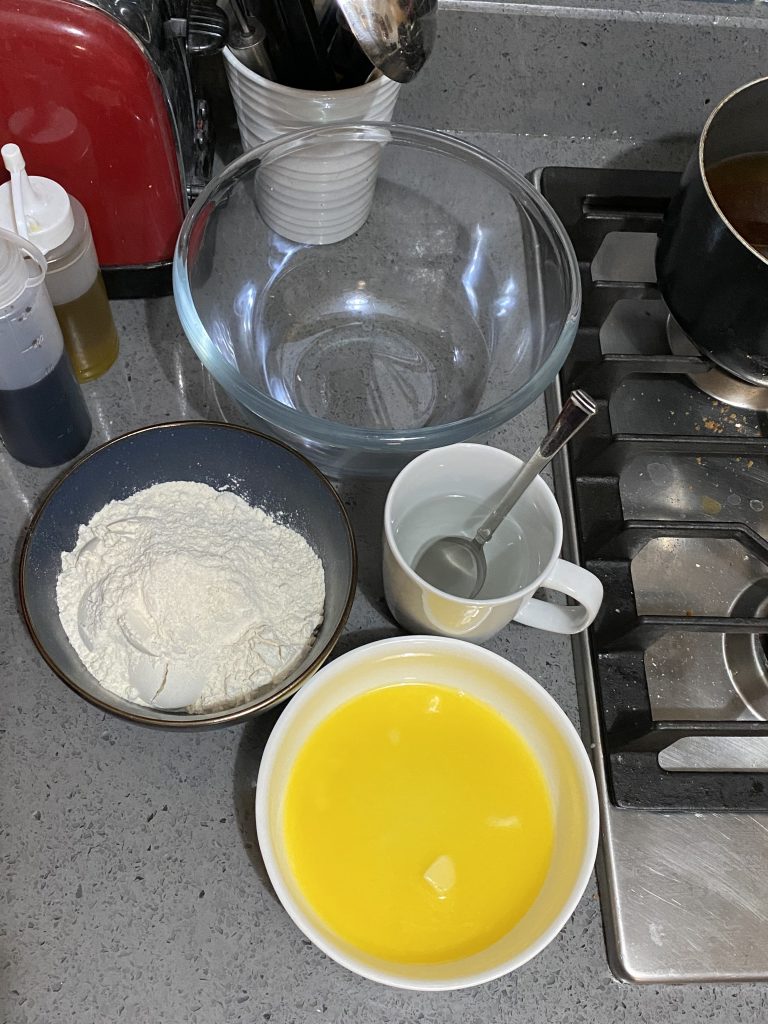
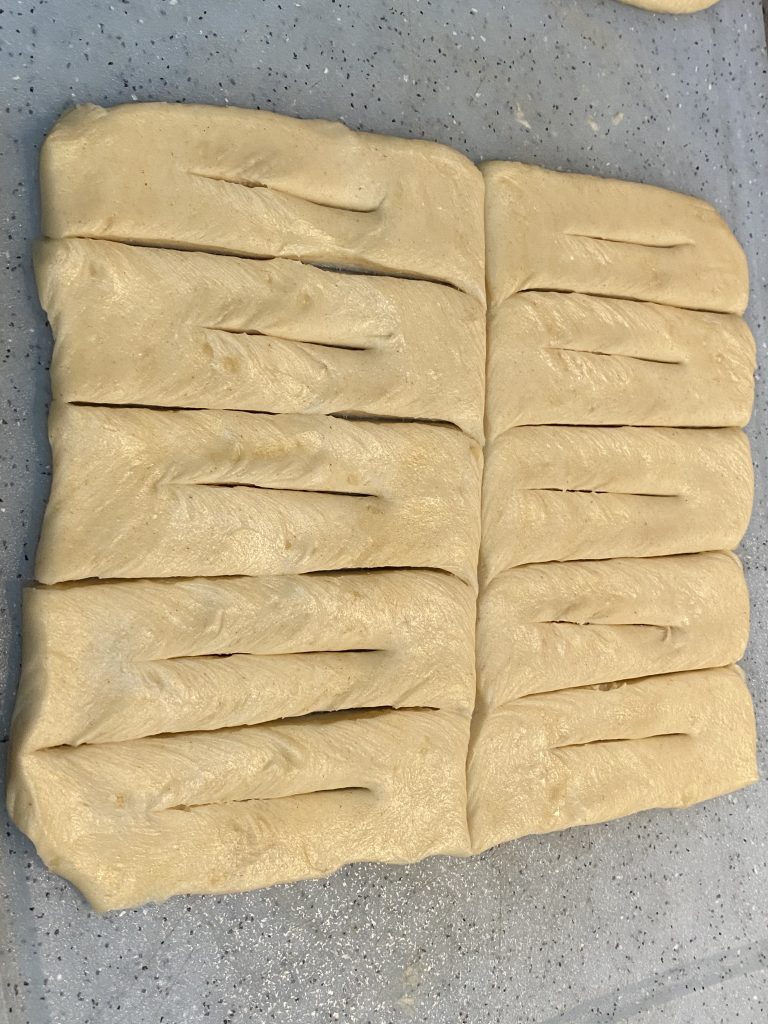
Ingredients
4 Tbsp unsalted butter
2 Tbsp sugar
125 ml warm water
250 g flour
Oil for frying
Instructions
In a medium sized saucepan, melt butter over medium-low heat.
In a small glass, dissolve sugar in the warm water and set aside.
Put flour in a large mixing bowl and add the melted butter. Then use your fingers to mix the butter and flour, until the mixture is slightly crumbly. Add the sugar water slowly and knead the mixture until a dough forms. The dough should be smooth and soft. Cover and let rest for 10 minutes.
Knead the dough on a cutting board for a few minutes. Then use a rolling pin to roll the dough flat. It should be about 3-4 mm thick.
Trim the edges off to make a rectangle and save the edges. Cut the dough into strips about 1.5 cm wide, and reserve one strip about 5 cm wide. Then cut the strips lengthwise into thirds. Cut a slit in the middle and then pull one end through it so it looks like a braid. This is the Ngyapsha form.
With wider pieces that were cut from the original rolled out dough, cut the pieces into rectangles about 8 cm x 5 cm. Fold in half so the rectangles are 4 cm x 5 cm. Cut parallel slits along the folded side but not all the way across. Open up the dough, and press the edges together to form a cylinder. Then you will pinch each strip and push it to the side alternately to form a sort of lattice flour.
The last shape is made by rolling the remaining dough into a long log about 1 cm in diameter. Then cut small pieces about 1/2 cm thick. Roll each piece into a ball. Then using a grater, press and roll down to make a taco shape with an indented print on it. This is the masun shape.
In a large pot, heat oil to medium heat. Fry the Khapse slowly until golden brown, and then drain on paper towels.
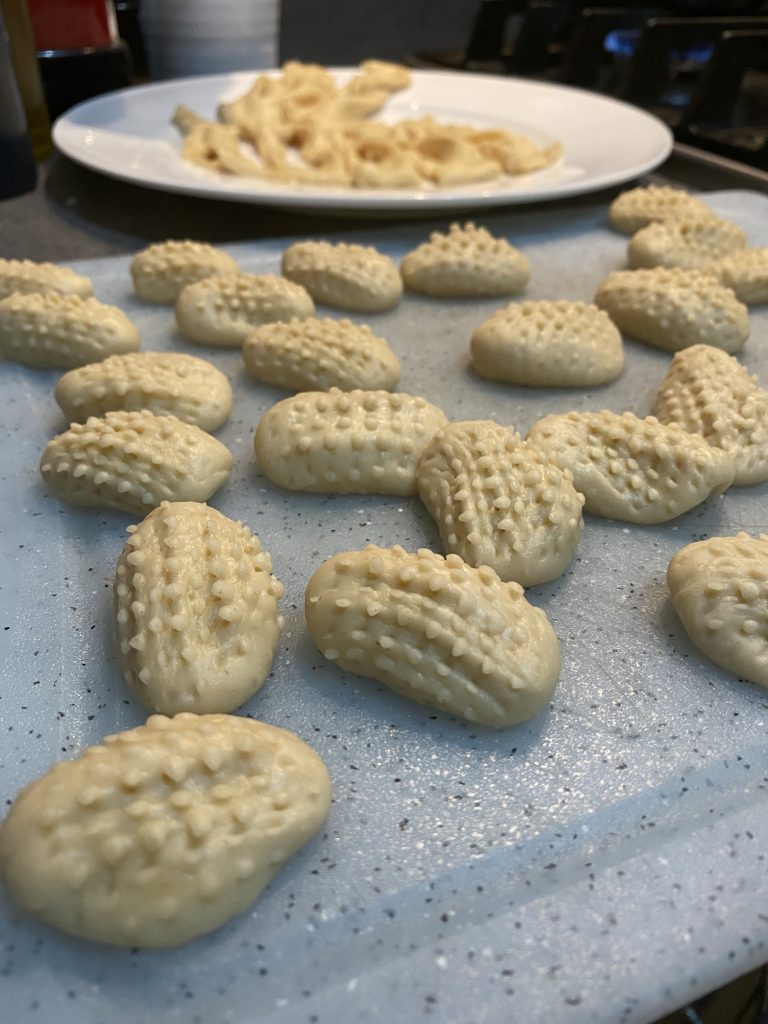
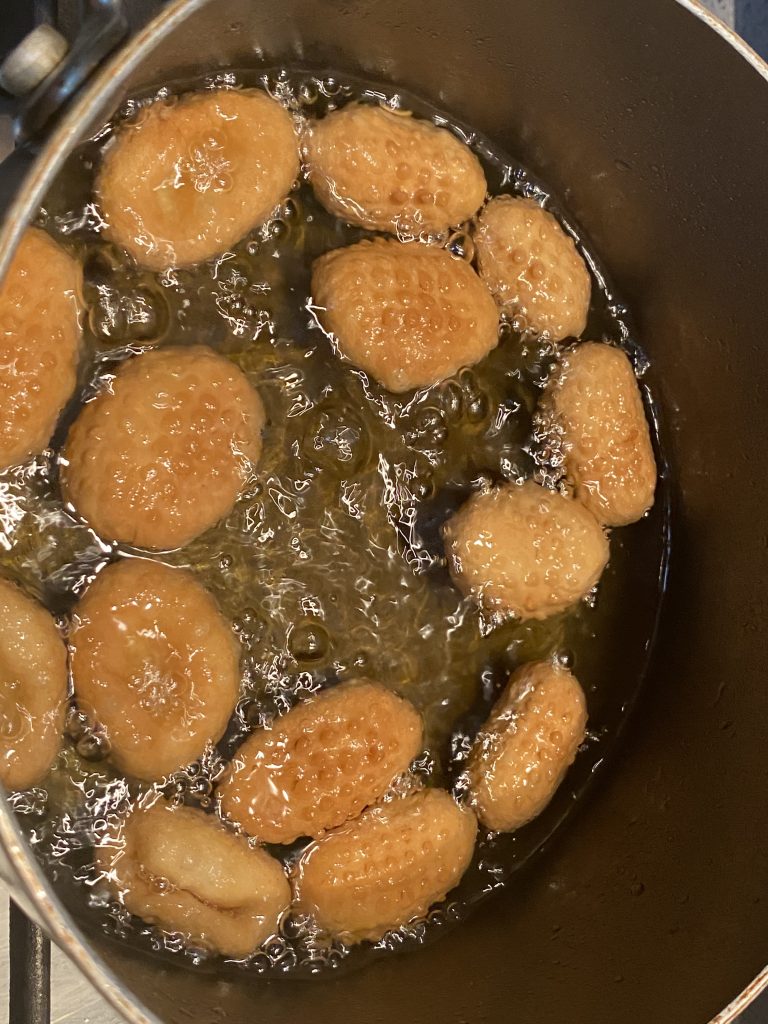
Go to Recipe Map
